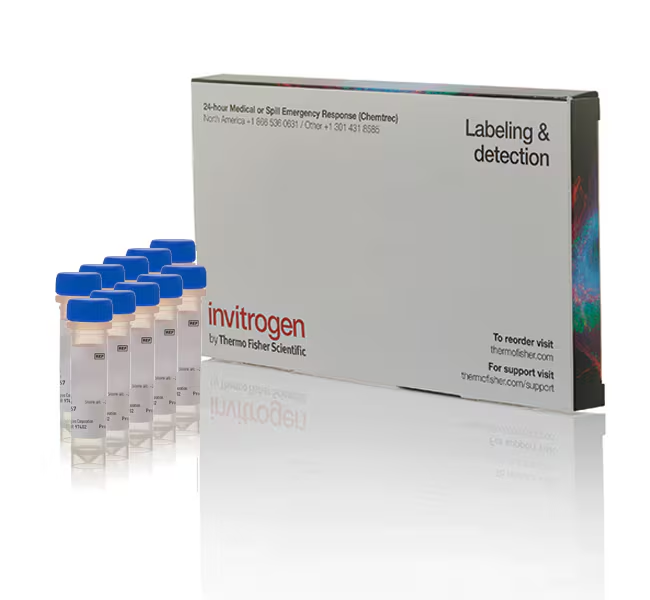
Labeled calcium indicators are molecules that exhibit an increase in fluorescence upon binding Ca2+. Fluo-3 has been used to image the spatial dynamics of Ca2+ signaling, in flow cytometry experiments involving photoactivation of caged chelators, second messengers, and neurotransmitters, and for cell-based pharmacological screening. Fluo-4 is an analog of fluo-3 with the two chlorine substituents replaced by fluorines, which results in increased fluorescence excitation at 488 nm and consequently higher fluorescence signal levels. Cells may be loaded with the AM ester forms of these calcium indicators by adding the dissolved indicator directly to dishes containing cultured cells. These indicators are useful for fluorescence and confocal microscopy, flow cytometry, and microplate screening applications.
Learn more about ion indicators including calcium, potassium, pH, and membrane potential indicators ›
Calcium Indicator (AM Ester) Specifications:
• Label (Ex/Em of Ca2+–bound form): Fluo-4 (494/506 nm)
• Fluorescence intensity increase upon binding Ca2+: >100 fold
• Kd for Ca2+ in buffer: ∼335 nM
• Exhibit fluorescence increase upon binding Ca2+ with little shift in wavelength
Using TPEN to Control Heavy Metal Cations
In addition, BAPTA-based indicators such as these bind various heavy metal cations (e.g., Mn2+, Zn2+, Pb2+) with substantially higher affinity than Ca2+. Perturbations to calcium measurements caused by presence of these ions can be controlled using the heavy metal-selective chelator TPEN.
More Choices for Fluorescent Calcium Indicators
We offer a large selection of Molecular Probes™ calcium indicators for use in various experimental scenarios. For more information, review Fluorescent Ca2+ Indicators Excited with Visible Light—Section 19.3 in the Molecular Probes™ Handbook.
For UV-excitable Ca2+ indicators, protein-based Ca2+ indicators, conjugates of Ca2+ indicators, and for fluorescence-based indicators of other metal ions (i.e., Mg2+, Zn2+) review Indicators for Ca2+, Mg2+, Zn2+ and Other Metal Ions—Chapter 19 in the Molecular Probes™ Handbook.
In reduced state, the excitation and emission maxima of BODIPY™ 581/591 undecanoic acid is 581/591 nm; after oxidation, the probe shifts the excitation and emission to 488/510 nm.
We recommend dissolving in high-quality anhydrous DMSO for stock concentrations of 1 to 5 mM.
| Code | Description |
|---|---|
| F14201 | Catalog Number: F14201 |

